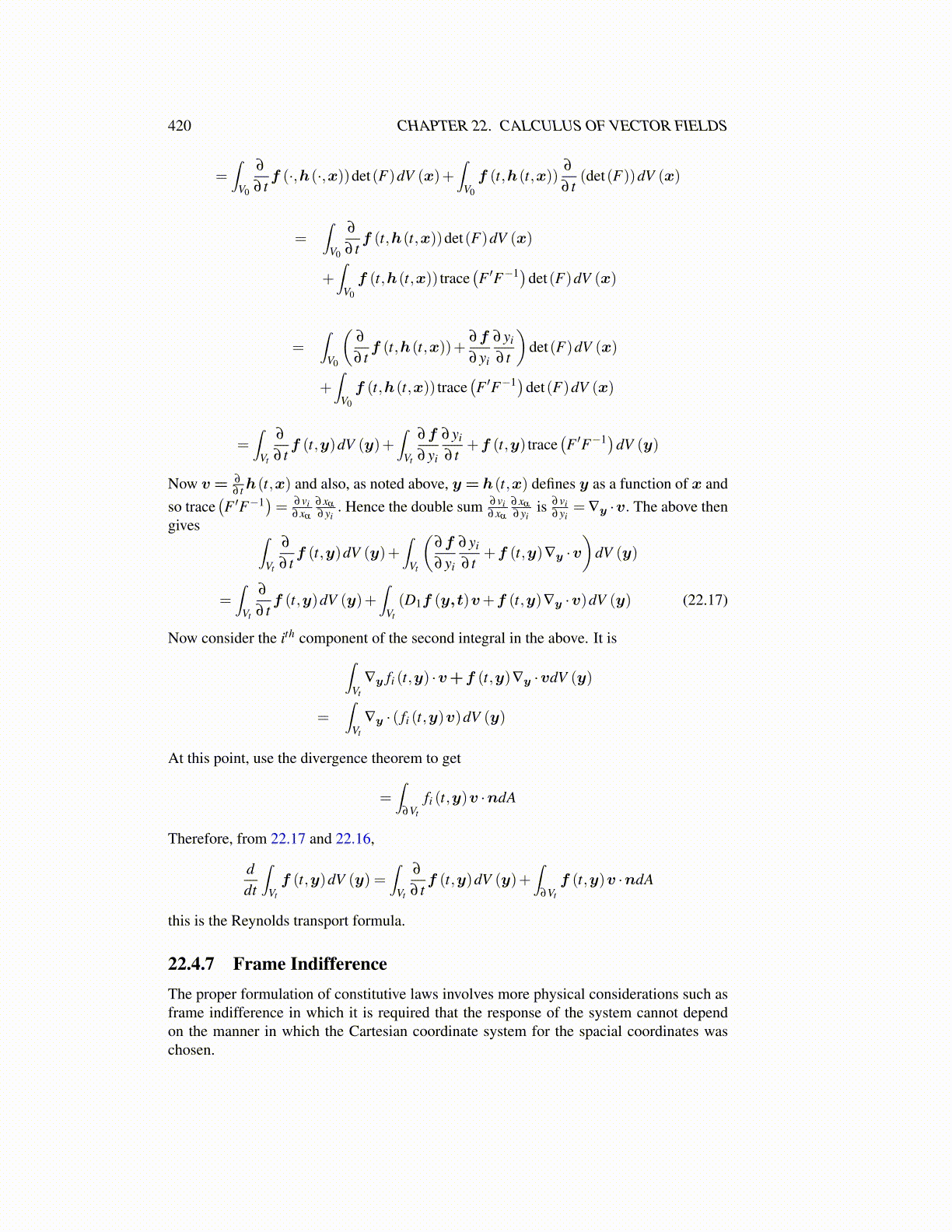
420 CHAPTER 22. CALCULUS OF VECTOR FIELDS
=∫
V0
∂
∂ tf (·,h(·,x))det(F)dV (x)+
∫V0
f (t,h(t,x))∂
∂ t(det(F))dV (x)
=∫
V0
∂
∂ tf (t,h(t,x))det(F)dV (x)
+∫
V0
f (t,h(t,x)) trace(F ′F−1)det(F)dV (x)
=∫
V0
(∂
∂ tf (t,h(t,x))+
∂f
∂yi
∂yi
∂ t
)det(F)dV (x)
+∫
V0
f (t,h(t,x)) trace(F ′F−1)det(F)dV (x)
=∫
Vt
∂
∂ tf (t,y)dV (y)+
∫Vt
∂f
∂yi
∂yi
∂ t+f (t,y) trace
(F ′F−1)dV (y)
Now v = ∂
∂ th(t,x) and also, as noted above, y = h(t,x) defines y as a function of x andso trace
(F ′F−1
)= ∂vi
∂xα
∂xα
∂yi. Hence the double sum ∂vi
∂xα
∂xα
∂yiis ∂vi
∂yi= ∇y ·v. The above then
gives ∫Vt
∂
∂ tf (t,y)dV (y)+
∫Vt
(∂f
∂yi
∂yi
∂ t+f (t,y)∇y ·v
)dV (y)
=∫
Vt
∂
∂ tf (t,y)dV (y)+
∫Vt
(D1f (y,t)v+f (t,y)∇y ·v)dV (y) (22.17)
Now consider the ith component of the second integral in the above. It is∫Vt
∇y fi (t,y) ·v+f (t,y)∇y ·vdV (y)
=∫
Vt
∇y · ( fi (t,y)v)dV (y)
At this point, use the divergence theorem to get
=∫
∂Vt
fi (t,y)v ·ndA
Therefore, from 22.17 and 22.16,
ddt
∫Vt
f (t,y)dV (y) =∫
Vt
∂
∂ tf (t,y)dV (y)+
∫∂Vt
f (t,y)v ·ndA
this is the Reynolds transport formula.
22.4.7 Frame IndifferenceThe proper formulation of constitutive laws involves more physical considerations such asframe indifference in which it is required that the response of the system cannot dependon the manner in which the Cartesian coordinate system for the spacial coordinates waschosen.